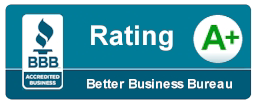
EQUITY VALUATION
Salary Detail
(3+ YEARS)
(10+ YEARS)
Course Details
a) Define Valuation and intrinsic value and describe applications of equity valuation
b) Contrast absolute and relative valuation models and describe examples of each type of model
c) Describe sum-of-the-parts valuation and conglomerate discounts
a) Distinguish among realized holding rate return, expected holding return, required return, IRR, discount rate
b) CAPM Model, Fama-French Model, Pastor-Stambaugh model, macro-economic multifactor model, build up method
c) Explain beta estimation for public companies, thinly traded public companies, and nonpublic companies
a) Compare top-down and bottom-up approach, compare "growth relative to GDP growth" and "market growth and market share"
b) Estimation of COGS, SG&A, Financing costs, and income taxes, describe approaches to balance sheet modeling, RoIC and competitive advantage
c) Demonstrate the development of a sales-based pro forma company model
a) Compare dividends, free cash flow, and residual income as inputs to discounted cash flow models
b) Calculate and interpret the value of a common stock using the dividend discount model (DDM)
c) Calculate and interpret the justified leading and trailing P/Es using the Gordon growth model
a) Compare the free cash flow to the firm (FCFF) and free cash flow to equity (FCFE) approaches to valuation
b) Compare the FCFF, FCFE model and dividend discount models
c) Explain the use of sensitivity analysis in FCFF and FCFE valuations
a) Distinguish between the method of comparables and the method based on forecasted fundamentals as approaches
b) Calculate and interpret alternative price multiples and dividend yield
c) Calculate and interpret the justified price-to-earnings ratio (P/E), price-to-book ratio (P/B), and price-to-sales ratio (P/S)
d) Explain alternative definitions of cash flow used in price and enterprise value (EV) multiples and describe limitations of each definition
a) Calculate and interpret residual income, economic value added, and market value added
b) Calculate the intrinsic value of a common stock using the residual income model and compare value recognition
c) Explain the relation between residual income valuation and the justified price-to-book ratio
d) Calculate the implied growth rate in residual income, given the market price-to-book ratio and an estimate of the required rate of return on equity
e) Compare residual income models to dividend discount and free cash flow models
a) Compare public and private company valuation
b) Describe uses of private business valuation and explain applications of greatest concern to financial analysts
c) Explain the income, market, and asset-based approaches to private company valuation and factors relevant to the selection of each approach
d) Calculate the value of a private company using free cash flow, capitalized cash flow, and/or excess earnings methods
- Revision and Doubts Sessions after completing Half syllabus
- Revision and Doubts Sessions after completing Full syllabus
- Live Webinars & Recordings
- Access to All Courses
- Cancel Anytime
- E-Diplomas
- Course Tool Kits
- Weekly Assignments
- Free 30 Day Trial
1,000,890 Successful Graduates
8 Live Interactive Lessons
4 Weeks
8 hours +
CFA Exam Prep





